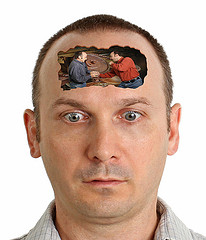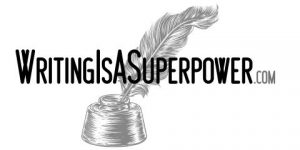Learn how to write a good novel by watching movies.
I once heard Garrison Keillor say: “Writing is simply completing one tiny task after another.” The trick is to know which tiny task to complete and when. That’s what you’ll learn in the How to Write a Novel email course.
I spent a large chunk of my life writing novels nobody wanted to read because I didn’t know any better. Finally, after years of study and dozens of failed attempts, I figured out how to write a good novel and published Some Glad Morning. Reader’s loved it.
With the success of Some Glad Morning, I was approached by independent authors who wanted me to write a review of their novel. Most of these novels were unreadable for the same reasons my earlier novels had been unreadable.
Apparently, many aspiring novelists believe, like I once did, that typing hundreds of pages of made up stuff is writing a novel. It’s not.
On the contrary, a novel is a precisely structured mechanism of emotion. In other words, a novel is structured and a novel is emotionally engaging.
A good novel isn’t written, it’s built, one scene at a time, on a three act skeletal frame.
 Many aspiring novelists fail to write a successful novel simply because, like my younger self, they don’t know how. This is why I wrote the How to Write a Novel email course.
Many aspiring novelists fail to write a successful novel simply because, like my younger self, they don’t know how. This is why I wrote the How to Write a Novel email course.
Once you’re enrolled, you’ll get the first training module instantly. Then you’ll get an additional training module every two to four weeks. All at no cost. This is my gift to you.
In each module, I do my level best to show you all I know about writing novels so your journey to success is short and swift.
Your job will be to read the training modules, plus the books I recommend, watch some popular movies, make notes as you plan your novel and ask me questions when you’re stuck or confused.
We start with the absolute basics so you’re well grounded in the fundamentals of storytelling. Then we build from there until you have all the skills you need to write a successful novel. Throughout the course, I use popular movies to demonstrate the elements of a good story.
Once you are familiar with story fundamentals, writing a good novel will be much easier and faster.
Here’s what you can expect:
- Module I: Story Fundamentals & Structure.
- Module II: Learning from the Movies – More Structure.
- Module III: The Essential Moral Premise.
- Module IV: Scenes & Transitions.
- Module V: Analyzing Novels – Stealing the Genre Formula.
- Module VI: Planning Your Novel – The Storyboard.
- Module VII: Story Mechanics & the Writing Process.
- Module VIII: Grammar, Style & Editing.
- Module IX: Copyright, Publishing, Agents & Marketing
To enroll, enter your best email address in the form at the top of the page.
As much as possible, I use popular movies to demonstrate essential story elements. The fundamentals of a good story are the same whether it’s told verbally, through film, on stage or in a novel. Learning how to write a good novel by watching movies is easy, fun and fast. You’ll see what I mean when you’re working on the assignment in Module I.
Now that you know the approach I’ll use, let me tell you a little more about the subjects we’ll cover.
 Module I: Story Fundamentals & Structure.
Module I: Story Fundamentals & Structure.
Module I is an introduction and overview of the essential elements of a good novel. A good novel entertains. That has to be the first rule of writing fiction…entertain. Otherwise, no one will read it. A good novel also proves an enduring psychological truth and is emotionally engaging.
It’s properly structured too and contains precise story beats. Once you understand how a novel is structured, the process of planning a novel gets much easier. It’s like you know what questions to ask your imagination.
Module II: Learning from the Movies – More Structure.
We start with the three act structure and then subdivide it into key events such as the catalyst and offering of grace. These key events, otherwise known as story beats, are universal and easy to spot in popular Hollywood movies.
At this point, it’s not a story formula. It’s just detailed story structure. A good novel is entertaining because it contains universal story beats that speak to the reader’s psyche. A reader may not realize the story beats are there, but they will surely know when they’re missing.
Module III: The Essential Moral Premise.
On the surface, a novel may appear to be little more than a main character who is driven to achieve an objective but faces conflict as someone, or something, attempts to stop her.
Many writing teachers, and books on writing, teach that the main character drives the action. This is true, but it’s not the whole truth. If you dig a little deeper, you’ll see that something drives the main character.

In the most compelling and emotionally satisfying stories, the main character is driven by a moral dilemma, a conflict of values. The story is actually the physical manifestation of the main character’s inner struggle. How the main character solves, or fails to solve, this inner conflict proves a psychological truth about how to be more fully human.
This psychological truth is also known as a moral premise. It’s seen time after time in successful movies and novels.
In this module, you’ll learn that the true seed of your story is the moral premise and how to use it to create every character, scene and line of dialogue.
Module IV: Scenes & Transitions.
A scene is a story unto itself. Each scene builds on the scene before it. This is where we leave the movies and get into the nuts and bolts of writing.
In this module, you’ll learn precisely what a scene is and how make each one count. You’ll learn how to manage the pace of your novel by how you use conflict in your scenes and when you don’t need a scene at all.
Plus, you’ll learn how to properly apply the old, and horribly misunderstood, writing mantra “Show Don’t Tell,” because sometimes telling is the only sane thing to do.
 Module V: Analyzing Novels – Stealing the Genre Formula.
Module V: Analyzing Novels – Stealing the Genre Formula.
Module V builds on the previous modules. You’re ready to analyze any novel once you understand story structure, the moral premise, scenes and transitions.
I’ll show you how to deconstruct the novel of your choice to see just what makes it tick. It’s like looking behind the curtain to see all the pulleys and levers.
If you want to know the formula of a genre, this is how to do it.
Module VI: Planning Your Novel – The Storyboard.
By now, you might be thinking this is a lot of stuff to think about it. It is, but I have a bag of tricks that make it all manageable.
My secret weapon is the storyboard and I show you exactly how I set up mine so planning a novel is as easy as daydreaming. Once you complete this module you’re ready to start writing.
Module VII: Story Mechanics & the Writing Process.
Here we cover how to create memorable characters, write dialogue, action and description to keep your reader riveted to the page. Plus how to keep the pace of your story just right.

Module VIII: Grammar, Style & Editing.
I’ll introduce you to my grammar and style secret weapon, plus my tricks for getting the deadwood out of your story.
Module IX: Copyright, Publishing, Agents & Marketing.
You’ll learn the fastest and least expensive way to copyright your novel.
I’ll also discuss self-publishing and traditional publishing, when you need an agent and how to get the best one, what really makes a bestseller, how to sell the film rights to your self-published novel, building readership and the right way to market your novel.
I’ve put everything I know about writing, publishing and marketing a novel into this course. Plus, I’m available to answer your questions. Now, it’s your turn…
To enroll, enter your best email address in the form at the top of the page.
I look forward to being your guide.
All the best…


Photo Credits: Lamp, typewriter and specs by John Levanen, Conflict by Scott Contini, Desk with Pencil Case by Nicola Sapiens De Mitri


